Audio Technica AT-VM95 ML Phono Cartridge by Paul Szabady
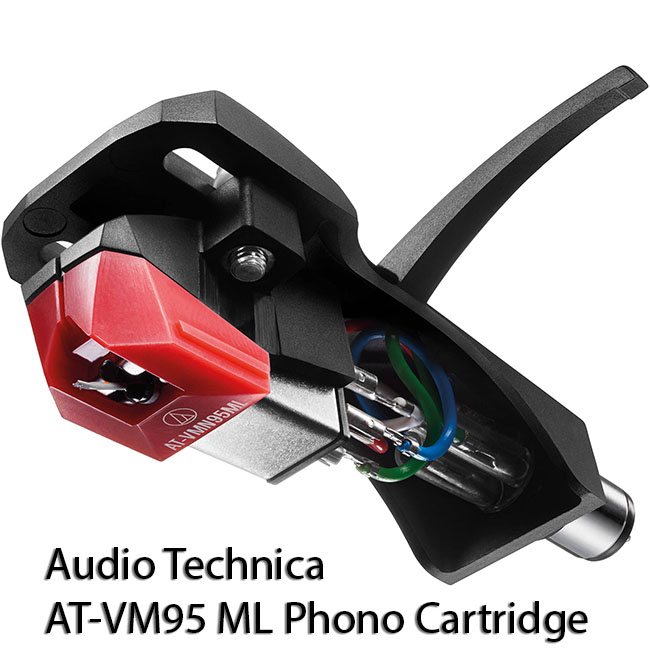
THE BUDGET REFERENCE?
Audio Technica’s “95” moving-magnet phono cartridges seem to have been around forever. The AT 95E (elliptical stylus) version has long been considered the top choice for really inexpensive cartridges. Available new at $50 and featuring an elliptical stylus, the AT 95E made up for a lack of ultimate refinement by excelling at boogie factor and timing. Linn used to give away a spherical-tipped version (the Linn Basik) to encourage buyers to upgrade their Linn tonearm choice when purchasing a Linn Sondek LP12 turntable, following their principle that a budget cartridge in an excellent table and tonearm will out-perform a top cartridge mounted to a mediocre turntable/arm.
My own experience of the cartridge goes back at least 25 years. I reviewed LP Gear’s Shibata-stylus upgrade to the AT95E some years ago (the LP Gear AT 95SA is still available at $186, along with other stylus choices, all at under $200) and found it worthy enough to be my top budget reference: here
 Audio Technica has recently re-vamped the old AT95 line into its current incarnation – the VM95 series. Significant in this new line-up is the choice of more exotic stylus profiles, including Shibata and AT’s Micro-Line (ML) line-contact types. The AT-VM95ML can be bought for $169, certainly in the affordable range for even budget-conscious LP enthusiasts. Moreover, one can interchange stylus types into the basic VM95 cartridge body, allowing an easy upgrade path. You just swap styli. One has the choice of spherical (for 78-RPM Mono LP’s, bonded elliptical, nude elliptical, Micro-Line, and Shibata.
Audio Technica has recently re-vamped the old AT95 line into its current incarnation – the VM95 series. Significant in this new line-up is the choice of more exotic stylus profiles, including Shibata and AT’s Micro-Line (ML) line-contact types. The AT-VM95ML can be bought for $169, certainly in the affordable range for even budget-conscious LP enthusiasts. Moreover, one can interchange stylus types into the basic VM95 cartridge body, allowing an easy upgrade path. You just swap styli. One has the choice of spherical (for 78-RPM Mono LP’s, bonded elliptical, nude elliptical, Micro-Line, and Shibata.
Those who have experienced the sonic difference that a line-contact stylus can make over a more standard elliptical stylus profile (not to mention conical tips) find it hard to return to the non-line-contact world. Although the line-contact stylus demands precise set-up of arm height in order to optimize the stylus’ “fit” (SRA/VTA) into the record groove, the gains in transient accuracy, lowered distortion, clarity, detail, and resolution are so significant musically and sonically that any travail encountered in ensuring proper arm height is quickly forgiven.
Here, however, is revealed the prime dilemma that inexpensive phono cartridges face: they are most likely to be installed in inexpensive turntables/arms. Since true high-fidelity Analog LP playback absolutely depends on extremely high levels of mechanical integrity and precision in the table and tonearm (not to mention the inherent quality of the phono stage and the rigor of the cartridge set-up,) inexpensive phono cartridges are often blamed for the inadequacies of the entire front-end. The messenger gets the blame for the unwelcome message.
Also raised is the corollary dilemma for reviewing inexpensive phono cartridges. Since one can only listen to an entire front-end when auditioning any LP playback product, at what point does using too good a turntable/arm/phono section give false hope to a potential cartridge user hoping to resuscitate, say, a “Vintage” Japan, Inc., direct-drive turntable found at the local thrift shop?
Despite the fact that there is no such thing as too good a turntable/arm, the US mass market has long been notoriously resistant to purchasing even an adequate, if not superior, turntable. Part of this is due to the popularly-held but short-sighted opinion that one should invest the bulk of one’s audio system budget into loudspeakers. This belief tragically ignores the overarching reality of garbage in/garbage out.
The recent surge in popularity of LP playback has only compounded the problem (sales of new LP’s has now surpassed sales of new CDs), as newbies to the LP are as equally resistant to investing $1000 for a turntable as they are to investing $2500 and up. The entry-level range is roughly $200 to $500. Few tables in this price range (and even substantially above) allow easy tonearm height adjustment if they allow any arm adjustment at all, so unless one lucks out and finds that the ML stylus aligns correctly with the turntable’s stock arm height, one has to resort to arm, platter surface, and/or headshell shims.
 I have, over the last 50 years, corralled a rather large stable of turntables and tonearms. These range in vintage, levels of resolution, and price, but all were chosen for their music-making abilities. I am a card-carrying member of the UK turntable design school’s central thrust: the ultimate judgment of a given component is the quality of its ability to reproduce the illusion of music accurately and movingly.
I have, over the last 50 years, corralled a rather large stable of turntables and tonearms. These range in vintage, levels of resolution, and price, but all were chosen for their music-making abilities. I am a card-carrying member of the UK turntable design school’s central thrust: the ultimate judgment of a given component is the quality of its ability to reproduce the illusion of music accurately and movingly.
This demand is particularly germane to turntable/tonearm performance, as the Analog LP’s superior potential for unlimited resolution demands designs that not only attain extremely high sonic fidelity but, most importantly, faithfully communicate all the musical techniques – timing, rhythm, drive, phrasing, punctuation, dynamics, and articulation – of all the instruments recorded. These techniques are universally used by musicians in all genres of music worldwide.
Consequently, while mounting a cartridge like the AT VM95ML into a $17,000 front-end rig might smack of being a slightly sardonic and a purely academic exercise, it can and does reveal the cartridge’s ultimate potential. The practical question for a reviewer becomes finding a turntable set-up that reveals most of what a cartridge can do without being so expensive as to be out of reach for the cartridge’s potential user.
I used a wide variety of turntables, arms, and phono stages in reviewing the VM95ML in an attempt to understand its inherent sonic signature. The VM95 series now incorporates threads in the mounting ears of the cartridge body for the mounting screws, greatly easing arm mounting over the old AT95 series. I set VTF at exactly two-grams and used either tonearm parallel to the record surface or very slightly negative VTA/SRA alignment. The VM95ML’s line-contact stylus was not exceptionally neurotic about set-up: the standard rules of thumb regarding finding the Goldilockian Ideal of ‘just right’ applied. Splashy high frequencies, increased surface noise, and no bass = too’ positive’ SRA; foggy loss of treble, smearing, and loose bass = too ‘negative.’
The problem is that most inadequate arms have those same sonic signatures, making it hard to separate SRA misalignment from tonearm aberrations. The cartridge was typical in requiring 20 hours of initial play before sounding its best and really hit its stride at 50 hours.
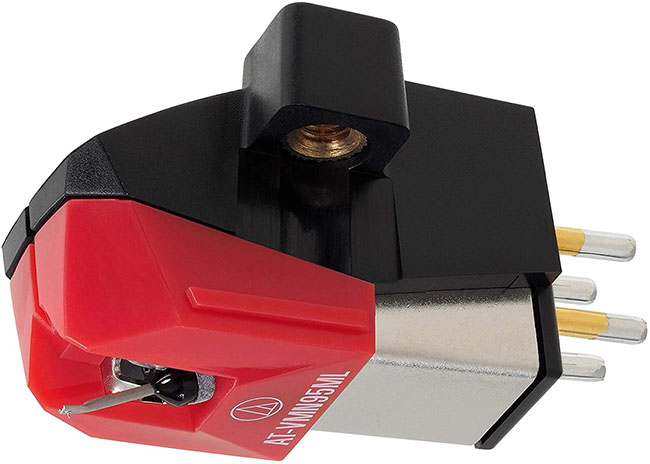
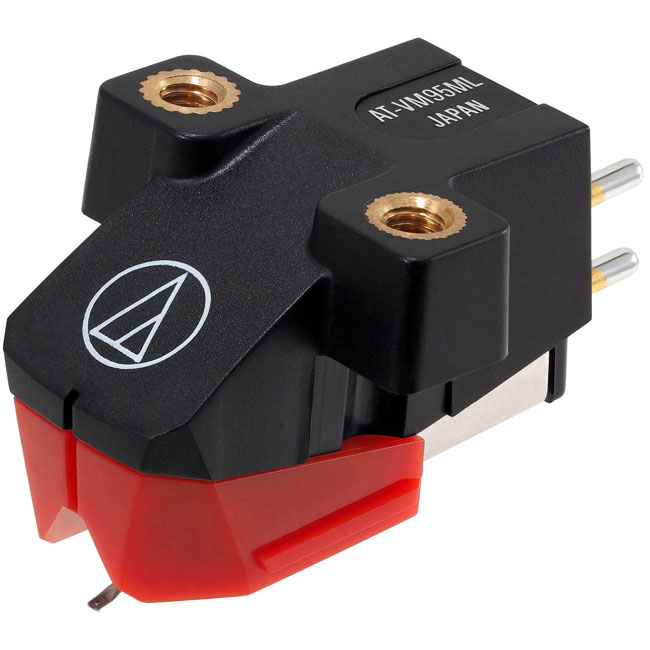
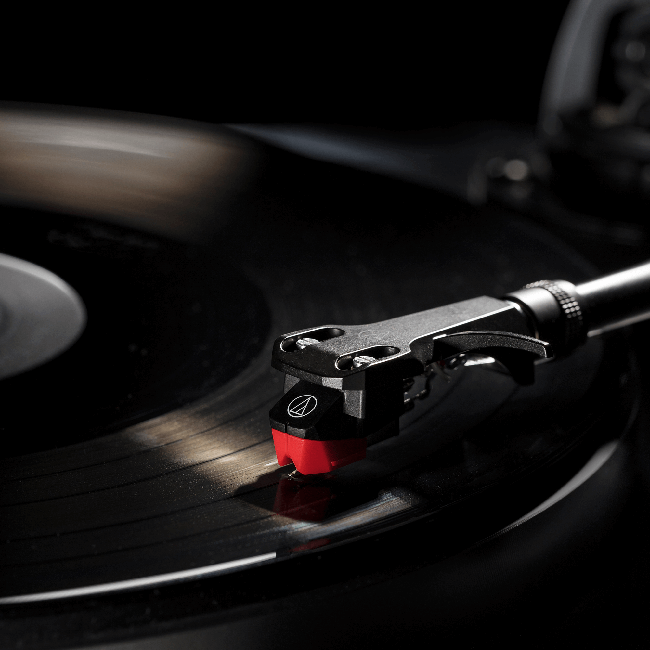
The “95” series has always been noted for its lively rhythmic thrust. The VM95 series continues the tradition. Drum and bass-driven music of all kinds – from Reggae to Rock to Jazz – was infectiously moving of one’s lower Chakras. Audio Technica has always opted for tightly controlled bass instead of loose and heavy bass designed to impress the naïve, a design decision that pays strong dividends in musical communication. The refinement, accuracy, and tracking ability of the ML stylus was revealed in the clarity and detailed sweetness of instrumental lines, which were readily untangled and open to perception.
I first tried the VM95ML in a used Technics SL1500 Direct-Drive turntable that I had acquired for use as a wet record-cleaning platform. (I use the Disc Doctor system, which does not require the use of a vacuum record-cleaning machine. Now available again from Acoustic Sounds.) The Technics table needed extensive cleaning and lubrication of its switches to restore speed accuracy, but otherwise was intact, its tonearm’s bearings like new. I decided to try it as a test mule.
 Direct-Drive tables (especially the SL1200 from Technics) gained their reputation from D-J applications and Disco duty. The SL1500 in stock form limited the VM95ML to simpler 4/4-ish Rock rhythms, which it kicked out with an impressive punchy mid-bass. The table quickly lost the plot when encountering more complicated rhythm patterns of more rhythmically hip Rock music (e.g., Little Feat, Frank Zappa, Jethro Tull, Funkadelic-Parliament, etc.) and was completely out-of-its depth with the more demanding rhythmic demands of Jazz, African, Islamic, and Indian music. The Direct-Drive Technics enforced a metronomic and militaristic rigidity to rhythm that to many is the bane of Japan, Inc.’s Direct-Drive offerings. Fine for DJs, not good for much else.
Direct-Drive tables (especially the SL1200 from Technics) gained their reputation from D-J applications and Disco duty. The SL1500 in stock form limited the VM95ML to simpler 4/4-ish Rock rhythms, which it kicked out with an impressive punchy mid-bass. The table quickly lost the plot when encountering more complicated rhythm patterns of more rhythmically hip Rock music (e.g., Little Feat, Frank Zappa, Jethro Tull, Funkadelic-Parliament, etc.) and was completely out-of-its depth with the more demanding rhythmic demands of Jazz, African, Islamic, and Indian music. The Direct-Drive Technics enforced a metronomic and militaristic rigidity to rhythm that to many is the bane of Japan, Inc.’s Direct-Drive offerings. Fine for DJs, not good for much else.
In general, classical and acoustic music revealed some (surprising) depiction of hall ambience and a nice clean top-end but turned into sonic mush when massed orchestral forces got loud. About the only test, the stock Technics Direct-Drive could pass was the old Dick Clark “American Bandstand” TV show record-rating criterion: “Duh, it’s got a good beat and I can dance to it.” Disco and lowest-common-denominator Rock and Pop – OK. Everything else – a much better tonearm is needed.
Fortunately, some salvation was readily at hand: I replaced the stock Technics mat with the superb Funk Firm Achromat and mounted Origin Live’s cosmically effective and super cheap (how’s $25 sound?) Cartridge Enabler between the headshell and the VM95 ML cartridge top. I also used Origin Live’s Gravity One Record Weight. The sonic and musical result was transformative, indeed, transmogrifying. The straight-jacketing of rhythms was largely removed, definition in the lower bass range clarified, hash and roughness ameliorated, and a subtle ‘electronic’ edge riding along the musical signal was vanquished. Mid-range became more neutral and clearer with increased intelligibility of lyrics. I was finally able to listen to the VM 95ML without the major distorting limitations of the Technics’ drive system and tonearm, though a mechanical-sounding rhythmic performance remained, along with slight smearing during full orchestral crescendos. But these modifications to the turntable and arm helped the VM95ML to begin to show some of its musical and sonic potential.
The VM95ML really started to reveal its full abilities when mounted into a Connoisseur BD2a turntable w/ Connoisseur SAU 2 tonearm, a forgotten classic whose uncanny music-making prowess is still unassailable, even 40 years after the firm’s demise. Next to be auditioned was a Linn Sondek Valhalla LP12 w/ Origin Live DC-motor conversion and Origin Live-modified Rega RB250 tonearm, w/OL’s platter mat, and gasket kit. Then it was on to an Origin Live Aurora MKII with the OL Onyx arm, and then finally an Origin Live Aurora Gold (now Calypso in OL’s line-up) with OL’s Conqueror tonearm. I used Origin Live’s Cartridge Enabler and Gravity One Record Weight in all my applications.
Not surprisingly, the performance of the VM95ML continued to improve as the quality of the Front-End improved, with vastly increased neutrality, definition, and resolution most obvious, particularly welcome at the all-important lower levels of dynamic nuance.
What was most impressive throughout all my auditions was the cartridge’s excellent musical communication. Timing, rhythm, and punctuation were very good by any criterion and simply superb at its exceptionally affordable price. Instrumental lines were untangled sufficiently well to reveal the complexities of even the densest music, yet the performers’ communication playing together to achieve a common aesthetic goal was not obscured. This was equally true for Rock, Pop, and Jazz – musics that Audio Technica has long been known to shine on – but also true for Classical music and acoustic music in general.
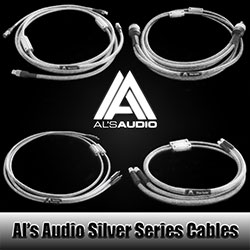 Indeed, I was very pleasantly surprised at how well the VM95ML depicted the sonority of all the choirs of the Classical orchestra, capturing each instrument’s unique voice. It passed the dreaded violin test without any shrill artifacts. Many cartridges fail miserably at this difficult task, even at exalted pricing. Furthermore, the 95ML was able to depict some of the ambiance of the recording venue in which instrumental sound unfolded. Not as well, or as literally, as more exotic stylus cantilevers can depict, but well enough to aid orientation and to reinforce the illusion of music playing in a real space. Sound-staging was wide and deep with a good sense of instrumental placement: I never encountered two instruments emanating from the exact same position in space.
Indeed, I was very pleasantly surprised at how well the VM95ML depicted the sonority of all the choirs of the Classical orchestra, capturing each instrument’s unique voice. It passed the dreaded violin test without any shrill artifacts. Many cartridges fail miserably at this difficult task, even at exalted pricing. Furthermore, the 95ML was able to depict some of the ambiance of the recording venue in which instrumental sound unfolded. Not as well, or as literally, as more exotic stylus cantilevers can depict, but well enough to aid orientation and to reinforce the illusion of music playing in a real space. Sound-staging was wide and deep with a good sense of instrumental placement: I never encountered two instruments emanating from the exact same position in space.
Special mention must be made of the transient abilities and high-frequency definition of the Micro-Line stylus. High-frequency percussion was unusually clear and rhythmic in all music. It even allowed the Triangle and Orchestral Bells to cut through the mass of instrumental sound in Classical compositions, a rare feat that is unheard of in its price range. The ML stylus is also noted for its exceptionally long playing-life, which can be further lengthened using LAST Stylus Preservative or Lyra SPT.
Viewed from an ultimate performance perspective, the VM95ML’s only real limitation is its aluminum cantilever, which lacks the ultimate speed, rigidity, and detail/snap of cantilevers made of more exotic and more expensive materials. Ultimately the VM95ML hits its resolution ceiling, above which it cannot go, no matter how sophisticated the arm and phono stage. It’s like the visual difference between a hazy, hot, and humid white-sky August day compared to a bright and windswept-clear blue-sky March day. The ‘sonic haze’ of aluminum cantilevers typically adds a kind of soft-focus mellowness to the sonic proceedings, which will likely be highly valued in its price range. “First, Cause No Pain!”
Ultimate portrayal of instrumental performance technique is also slightly blurred – extremely rapid series of notes are homogenized, and fine dynamic changes within those lines averaged out. Enough gets through, however, that the emotion informing the technique is not entirely lost.
All in all, then, the Audio Technica AT VM95ML, especially when used with Origin Live’s Cartridge Enabler, can be safely and enthusiastically recommended if one’s budget is firmly curtailed. Its sins are those of omission rather than commission, and it communicates the rhythm, drive, and energy of music in a way that most cheap cartridges don’t. Its stand-out feature is its superb Micro-Line stylus, which outclasses other cartridges in its price range.
The VM95ML’s affordable $169 price makes it prey to inexpensive and inadequate turntables and arms, which will fail to extract its complete potential. Played in an uncompromised front-end will reveal its ultimate limitations and thus place it into an unfortunate Limbo. Too good for crap tables and not quite good enough for really good tables. This dilemma is faced by all inexpensive phono cartridges, unfortunately. The VM95ML rules the roost by virtue of its exceptional music-making.

![]()
paul szabady
Specifications:
Price: $169.00
Cartridge & Stylus
Frequency Response 20-25,000 Hz
Channel Separation 23 (dB at 1 kHz)
Vertical Tracking Angle 23°
Vertical Tracking Force 1.8-2.2 g (2.0 g standard)
Stylus Construction Nude square shank
Recommended Load Impedance47,000 ohms
Coil Impedance 3.3 k ohms (1 kHz)
DC Resistance 485 ohms
Coil Inductance 550 mH (1 kHz)
Output Voltage 3.5 mV (1 kHz, 5 cm/sec.)
Output Channel Balance 1.5 dB (1 kHz)
Stylus Shape 2.2 x 0.12 mil Microlinear
Cantilever Aluminum pipe
Static Compliance 20 x 10 – 6 cm / dyne
Dynamic Compliance 10 x 10 – 6 cm / dyne (100 Hz)
Mounting Half-inch
Cartridge Weight 6.1g
Dimensions 17.2 mm (0.68″) H × 18.9 mm (0.74″) W × 28.3 mm (1.20″) D
Accessories Included Two 11 mm installation screws, two 8 mm installation screws, two washers, nonmagnetic screwdriver
Model AT-VM95ML
Mounting Feature Half-inch mount
Recommended Load Capacitance 100 to 200 pF
Replacement Stylus AT-VMN95ML
Stylus Size 2.2 x 0.12 mil
Type VM Stereo Dual Magnet
Weight 6.1 g (0.22 oz)
Wire Used for Coil T.P. Copper
Stereo Times Masthead
Publisher/Founder
Clement Perry
Editor
Dave Thomas
Senior Editors
Frank Alles, Mike Girardi, John Hoffman, Russell Lichter, Terry London, Moreno Mitchell, Paul Szabady, Bill Wells, Mike Wright, Stephen Yan, and Rob Dockery
Current Contributors
David Abramson, Tim Barrall, Dave Allison, Ron Cook, Lewis Dardick, Dan Secula, Don Shaulis, Greg Simmons, Eric Teh, Greg Voth, Richard Willie, Ed Van Winkle, and Rob Dockery
Music Reviewers:
Carlos Sanchez, John Jonczyk, John Sprung and Russell Lichter
Site Management Clement Perry
Ad Designer: Martin Perry




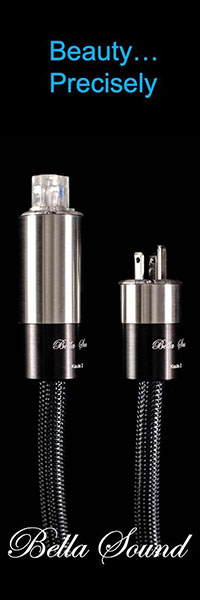

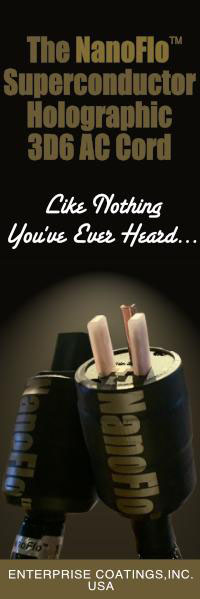
Be the first to comment on: Audio Technica AT-VM95 ML Phono Cartridge by Paul Szabady